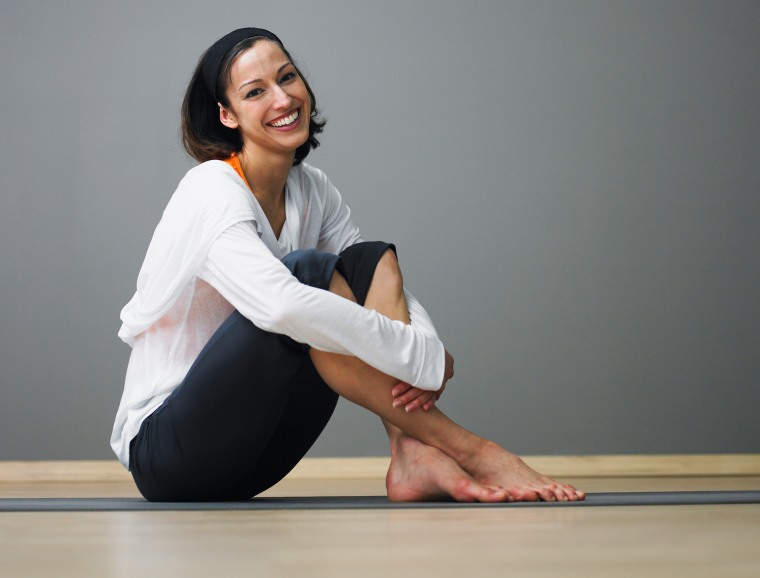A simple test that looks at how easy -- or difficult -- it is for you to sit down on the floor and then get back up may help predict how long you’re going to live, a new study shows.
Middle-aged and elderly people who needed to use both hands and knees to get up and down were almost seven times more likely to die within six years, compared to those who could spring up and down without support, Brazilian researchers reported Thursday in the European Journal of Preventive Cardiology.
Doctors have long used the chair test -- where a person stands up from a sitting position -- to determine leg strength and lower body fitness of seniors. But the new test is more difficult and can be used with a younger group, said cardiologist Dr. Kathryn Berlacher, an assistant professor at the University of Pittsburgh Medical Center.
While the most important factor controlling the ease of getting down and then up is the ratio of muscle power to body weight, there are “other very relevant issues including body flexibility, balance, and motor coordination,” said Claudio Gil Soares de Araújo, a professor at Gama Filho University in Rio de Janeiro who worked on the study.
Ultimately the test gives a quick window into a patient’s ability to function from day to day.
“Moving, for the average person, especially those who are older, and the ability to rise from the floor is very much relevant for autonomy,” Araújo said. “Imagine if your glasses went below the bed. You would need to sit on the floor to reach then and then you would need to rise.”
The researchers followed 2002 adults aged 51 to 80 for an average of 6.3 years. Sixty-eight percent were men. At the outset, each study volunteer was asked to sit down on the floor and then get up, using the least amount of support from hands, knees and other body parts.
The volunteers could score five points if they could sit down without touching their knees, legs, hands, or arms on the floor and another five points if they could get back up unaided.
They lost a point for each body part that was leaned on while getting down or up. So, people who could get down touching the floor with just one knee scored four points. If they needed to touch a hand and a knee on the floor as they were rising, they would lose two points for a score of three. If the volunteers looked wobbly on the way down or up, they lost half a point.
The most agile ended up with a combined score of 10 while those who couldn’t get down or up at all were scored with a zero.
During the course of the study 159 of the volunteers died, with the majority of the deaths in the group that had the most trouble getting up and down.
A person’s score matched well with risk of death. People who scored zero to three were 6.5 times as likely to die during the course of the study, compared to people who scored from 8 to 10. Those who had scores of 3.5 to 5.5 were 3.8 times as likely to die as the high scorers -- and those who scored 6 to 7.4 range were 1.8 times more likely to die than those with the highest scores.
“Just two subjects that scored 10 died in the follow-up of about six years,” says Araújo. If someone between the ages of 51 and 80 scores 10, “the chances of being alive in the next six years are quite good,” he said.
The test may be most valuable as a tool for primary care physicians to show patients they need to work on their health, Berlacher said. “These days most don’t exercise and if you ask them whether they walk up stairs they tell you about knee and ankle pain. So it’s hard to truly assess them.”
More health news from NBCNews.com:
